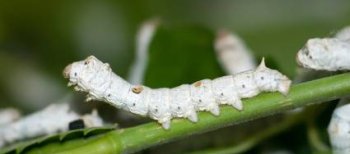Cotton
Cotton is soft, light, breathable and natural – which makes it a popular choice among quilters. Batting that’s made from 100% cotton is typically very thin.
Polyester Polyester is favored because it holds its shape and thickness very well. Polyester has its benefits and drawbacks. It’s non-breathable and thicker, but it’s lighter, keeps you warm and is resistant to mold and mildew. Quilters often choose this type of batting for bedding and crib quilt s that will be often washed.
Wool
Lightweight and warm, wool is a lofty and natural option for quilters. Like polyester, wool holds its shape very well and is resistance to creases.
Cotton/Poly Cotton/polyester blends offer the best of both worlds. In most cases, the batting is an 80% cotton, 20% polyester blend. Because cotton makes up the majority of the material, you get the advantages of breathability and a mostly natural fiber. The polyester adds a little more loft.
Bamboo In most cases, bamboo batting is made with a blend of 50% bamboo and 50% cotton. This provides a very breathable material, but will shrink slightly when washed.
 Silk batting is a natural fiber made from the silkworm
cocoon. It is one of the newer batting to come on the market. Batting made from
silk is very light, fluffy and drapes like no other batting making it great for clothing.
Silk batting is a natural fiber made from the silkworm
cocoon. It is one of the newer batting to come on the market. Batting made from
silk is very light, fluffy and drapes like no other batting making it great for clothing.
There are also different ways to “bond” fibers together when creating batting.
Bonded Using the bonded method, the fibers are bonded together using either a resin or thermal method. With this method, the fibers won’t break down as easily when washed.
Resin bonded batting is made using a variety of fibers, including wool, cotton and polyester. For this method, a resin is applied to each side of the batting. The batting is then left to dry and cure.
Fusible Contains a fusible web, which allows for basting of layers.
Needle Punch The needle punch method uses thousands of tiny needles to felt the batting together mechanically. Needle punch batting has a lower loft, but is stronger and denser than most other batting.
Scrim Scrim refers to yet another method of fusing batting fibers together. With this method, a thin stabilizer is needle-punched into the quilt’s batting. This adds loft and strength while preventing distortion and stretching.









No comments:
Post a Comment